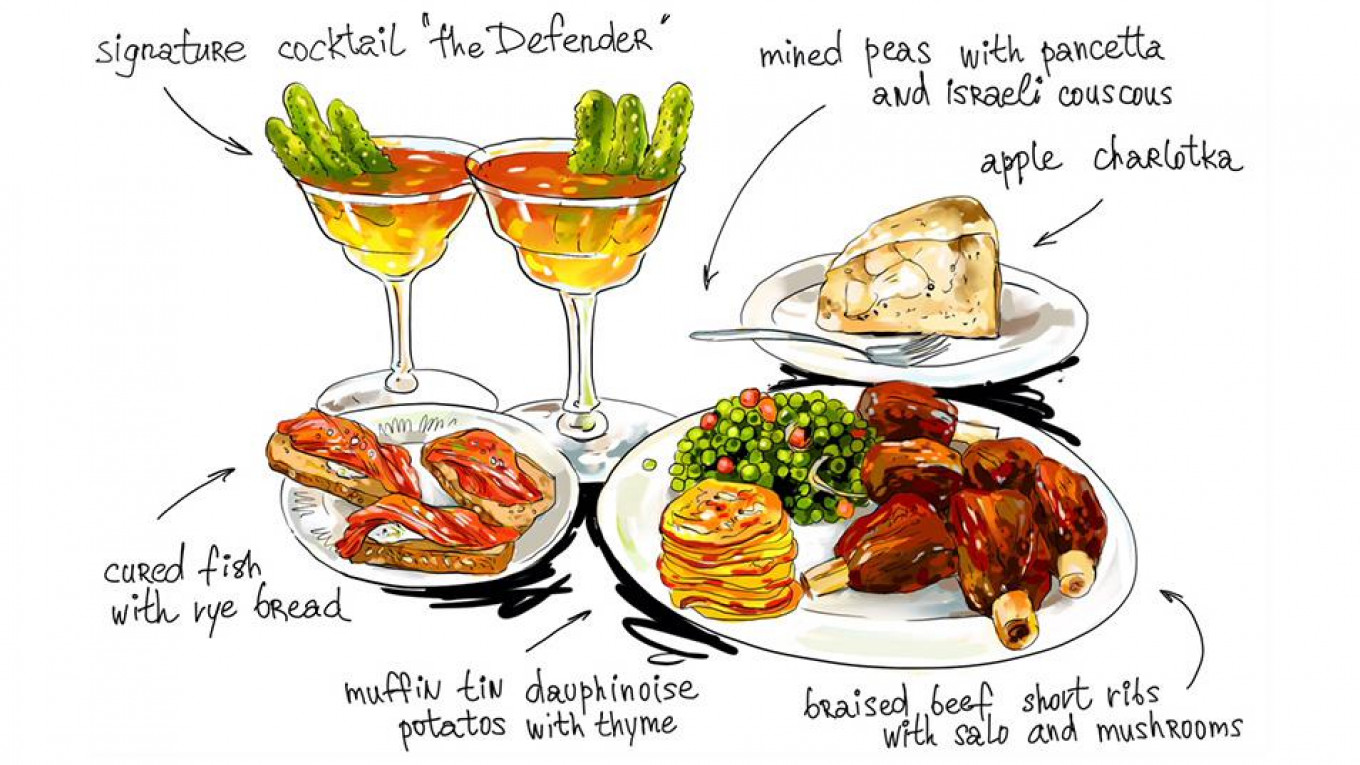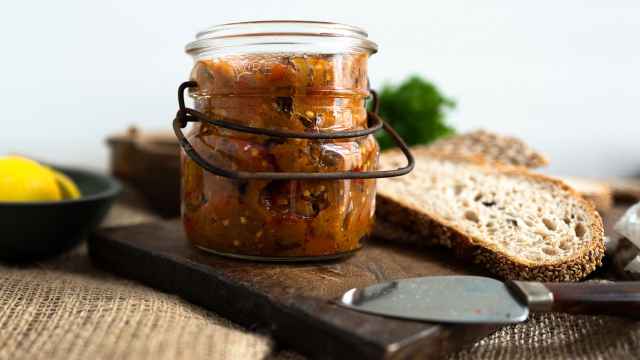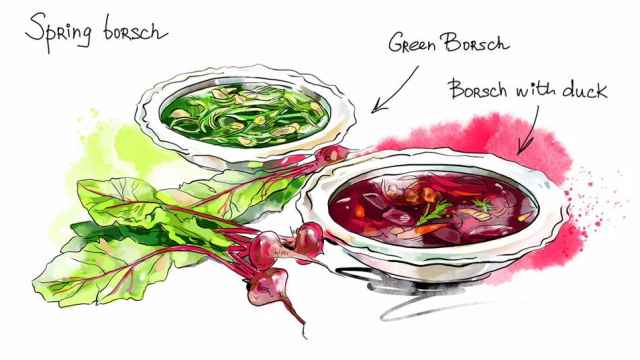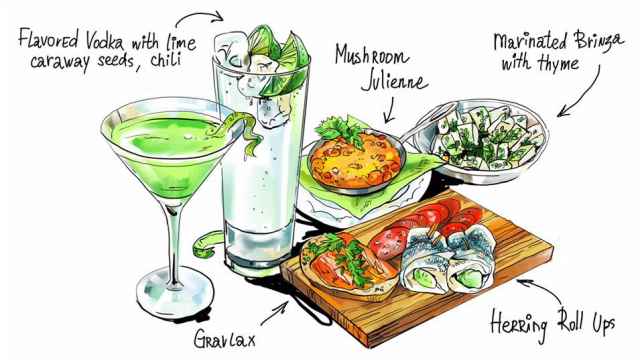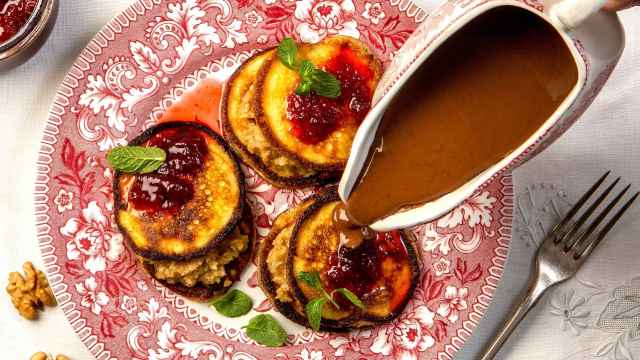It’s no secret that feminists have a tough row to hoe in Russia, where the #MeToo movement is pilloried by conservative television anchors and female porn stars alike. Russia is still very much a country for men and this seems unlikely to change in the future, and certainly not this week, as we gear up for that most masculine of holidays: Defenders of the FatherlandDay, or Men’s Day.
This year marks the centenary of Men’s Day, which was first celebrated in 1918 during a hastily organized rout of Kaiser Wilhelm’s forces by the even-more-hastily-organized Red Army. The Bolsheviks, anxious to forge new traditions, placed great emphasis on this foundation holiday in the following years. The day became a time to glorify the bravery and courage of the Red Army, which was busy giving the far less organized White Army a serious run for its money.
Red Army Day morphed over the years into Soviet Army Day, and during that era, it enjoyed elite “Red Day” status in the calendar. Today, the holiday is still celebrated, though with less emphasis on the Red Army, but the same amount of glorification for those who defend the Fatherland.
“But why just men?” I hear the more evolved of my readers ask, “Can’t women defend the Fatherland?”
Why shouldn’t you have to spend one year in the army which teaches you useful things like how to curse, and equips you to become a surly security person at a shopping mall?
The universality of mandatory male conscription in Russia has given rise to the idea that all men — not just the military types — should be fussed over, feted, and catered to on Feb. 23. In the more cynical and mercantile times we live in, the day has morphed into something of a one-way Valentine’s Day.
So, if you are a woman, this is the week to set aside your pink hat, your black dress, and your #TimesUp and #MeToo hashtags, and roll up your sleeves head into the kitchen to make some magic.
“And why should I bother?” I hear you cry.
Because of this old Russian phrase, which imparts cogent and practical advice to the potentially uppity female:
“As you meet the twenty-third, so shall you spend the eighth.”
The eighth, of course, refers to March 8 or International Women’s Day, which comes a mere two weeks after Defenders of the Fatherland Day.
What it boils down to is good old-fashioned blackmail: to get something on the eighth, you’ve got to give something on the twenty-third.
I have no choice in the matter: my HRH (Handsome Russian Husband) served in Soviet Army as an officer, so he’s expecting the full service on the twenty-third. While he puts his feet up and watches Offitseri for the three billionth time, I’ll be in the kitchen making something hearty and delicious — a meal fit for a Defender of the Fatherland and one that lays some major groundwork for the Eighth of March.
While this menu looks impressive, it is actually very simple and there is much that can or must be made ahead, which is always a good thing when you are catering to a Defender.
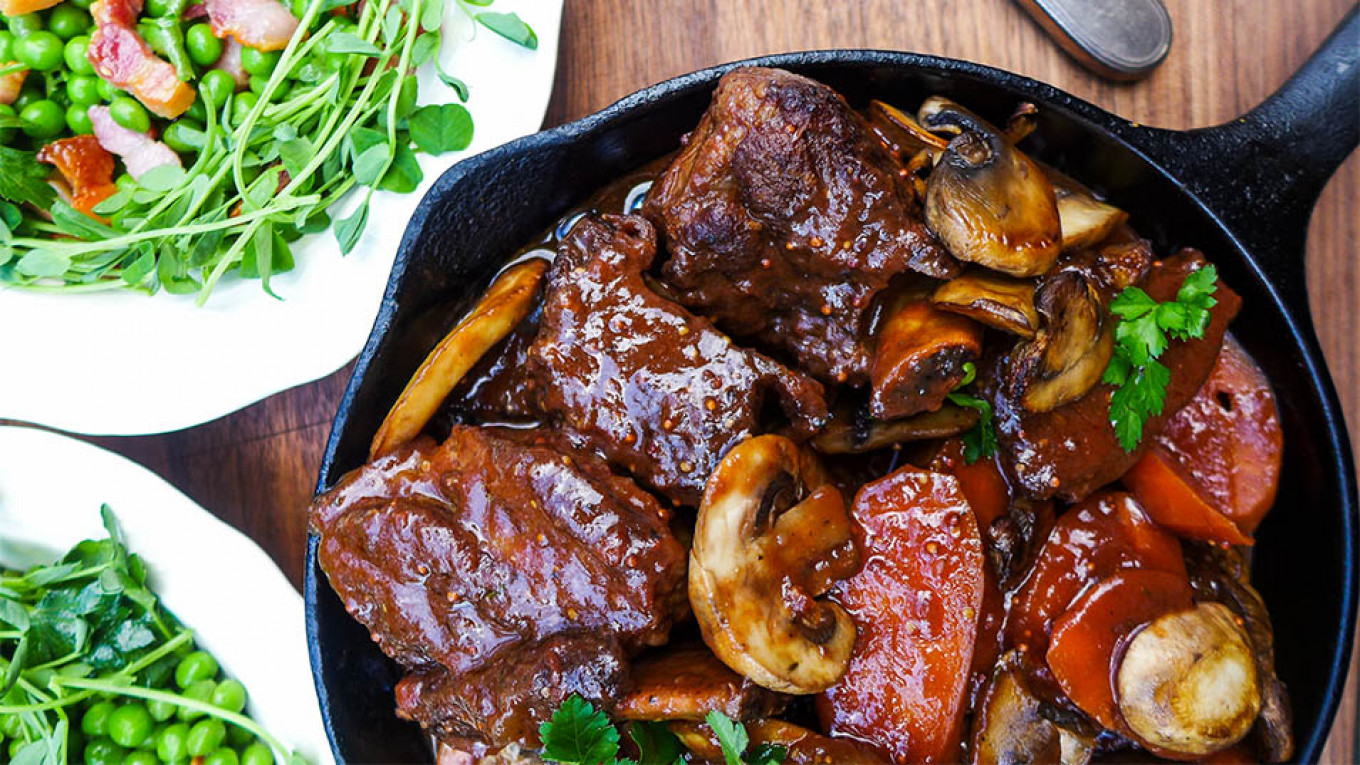
Men’s Day Menu (Feb. 23)
Signature Cocktail: “TheDefender”
Vodka and Cured Fish with Rye Bread
Braised Beef Short Ribs with Salo and Mushrooms
Muffin Tin Dauphinoise Potatoes with thyme
Minted Peas with Pancetta and Israeli Couscous
Apple Charlotka
The Defender
I howled with laughter recently when I went out to a hotter-than-hot bar in Brooklyn with one of my hipster writer buddies, because guess what the hotter-than-hot cocktail was that had the artisanal cheese makers lined up, three rows deep to consume?
Pickle juice.
I swear.
To be honest, I felt a bit smug, because for once I felt ahead of the curve rather than woefully behind it. In Russia, we use pickle juice for everything: to manage acne, to aid digestion, to give borsch its tang, and, of course, to cure a hangover — something that every Defender needs on February 24.
I played around for a while to concoct a mixture that has the approximate look of that drab military greeny brown they wear, and I’ll admit that the result looks a bit too much like sludge for my taste, but this cocktail has a lot of body and character: like a Bloody Mary that went on a health kick. And it has the added advantage of being able to do double duty: kick offthe Men’s Day festivities and help him recover from them.
Ingredients:
- 2 oz. (60 ml) whiskey or vodka
- 1 oz. (30 ml) fresh beet juice
- 1 oz. (30 ml) fresh celery juice
- ½-oz (15 ml) pickle brine
- 1 wedge of fresh lime
- ½-tsp of prepared horseradish
- 3 “tipsy” olives or one good quality gherkin as garnish
- 1 Tbsp (15 ml) sea salt mixed with freshly chopped dill
Instructions:
- Lightly moisten one side of the rim of a short, squat “old fashioned” style glass, then dip that side of the glass into the salt and dill mixture.
- Combine the vodka/whiskey, beet and celery juice, pickle brine, and horseradish in a cocktail shaker filled with ice. And shake vigorously for about a minute.
- Strain the contents into the glass and garnish with olives and fresh lime.
Whiskey-Cured Salmon
No Defender likes to be sitting around, his stomach rumbling, as he waits for his gala meal, so be sure to have some sturdy zakuska at the ready. Because the main course is classic meat and two vegetables, a tangy, salty cured fish washed down with some ice-cold vodka or our signature cocktail is just the thing to get the evening off to the rightstart!
I got my inspiration from Alison Roman’s excellent gravlax recipe in her much-anticipated book of “highly cookable recipes,” Dining In.
Ingredients:
- One salmon fillet with skin on (in Russia, ask them to cut you a 750-gram chunk from the narrow end of the larger fish)
- ½-cup (118 ml) kosher salt
- ¼-cup (60 ml) chopped fresh dill
- 1 Tbsp (15 ml) dill seeds
- 2 Tbsp (30 ml) dark brown sugar
- 2 Tbsp (30 ml) black peppercorns
- 1 Tbsp (15 ml) whole coriander seeds
- 2 Tbsp (30 ml) lime zest
- 2 Tbsp (30 ml) smoky whiskey orplain old vodka
Instructions:
- Toast the peppercorns and coriander seeds in a frying pan over medium heat until their odors begin to amplify.
- Pound the spices in a mortar and pestle.
- Add salt, zest, sugar, dill, dill seeds, and the salt and rub the mixture to combine.
- Remove all bones from the salmon, then place it, skin side down on a platter.
- Rub the alcohol into the flesh of the salmon.
- Thoroughly work the salt mixture into the flesh of the salmon.
- Wrap the salmon in several layers of cling film. Use the tines of a fork or a small paring knife to cut several holes through the plastic wrap on the skin side.
- Place the wrapped salmon on a rack set inside a shallow tray, skin side down.
- Weight the salmon down with a smaller cookie sheet with something heavy on top, like a large bottle of something.
- Let the salmon cure for at least three days before you unwrap it to taste. More time means more brine, a saltier and slightly oilier result.
- Slice the gravlax very thinly and serve on thin slices of Borodino bread with the barest hint of butter. Top with more dill and a squeeze of lemon.
Braised Beef Short Ribs with Salo and Mushrooms
Short ribs, which I used to buy only for making solyanka, have roared back into fashion of late, and most welcome they are. Their marbled layers of meaty meat and fatty fat lend themselves perfectly to the low and slow method of cooking: a leisurely two-three hour simmer in a flavorful bath of wine, stock, and a few secret ingredients renders the meat so tender it slips off the bone.
This dish is best made ahead oftime — ideally 24 hours — for two reasons. The first, of course, is that any braise will taste better the following day after the flavors deepen and intensify. The other is because, while the fat in the short ribs is essential toget that rich flavor, it is far too much grease for the dish. Allowing the finished dish to chill overnightenables it to form what one of my cousins refers to as “that skating rink of fat,” which can be easily removed. The salo in the finished glaze reintroduces the fatty notes back into the dish.
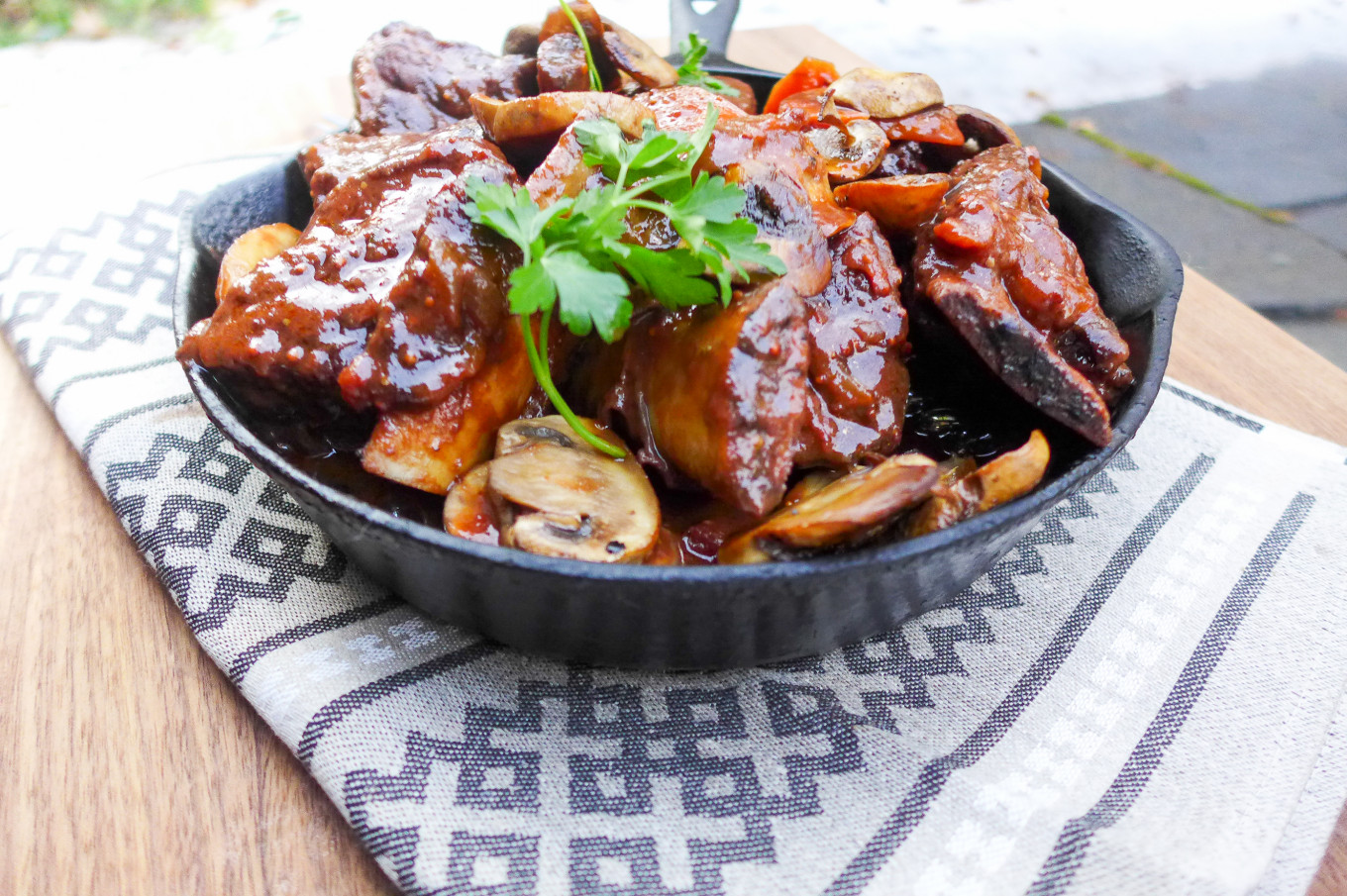
Ingredients:
- 4 or 4-½-lbs (2 kl) meaty beef short ribs
- 3 Tbls (45 ml) flour
- One large yellow onion, coarsely chopped
- One carrot coarsely chopped
- Two celery stalks, coarsely chopped
- Three garlic cloves, peeled and grated
- 2 Tbsp (30 ml) olive oil
- 3 Tbsp (45 ml) of blackberry jam
- Two anchovy fillets
- 2 Tbsp (15 ml) tomato paste
- 1 cup (240 ml) beef or chicken stock
- 2 cups (500 ml) red wine
- 2 cups (500 ml) preserved chopped tomatoes
- 2 Tbsp (30 ml) preserved mustard
- Two bay leaves
- Two sprigs of fresh rosemary
- 1 Tbsp (15 ml) whole cloves
- Two sprigs of fresh thyme plus more to garnish
- For the Sauce
- One ½-pound (200 grams) fresh white mushrooms, cleaned and sliced
- 2 Tbsp (30 ml) dry white wine
- 2 Tbsp (30 ml) butter
- One ¼-pound (100 grams) pork salo (lardo), cut into a small dice
- Fresh pepper and salt
- Fresh parsley
Instructions:
- Preheat the oven to 275ºF (135ºC)
- Remove the short ribs from the refrigerator 1-2 hours before cooking so that they come to room temperature. Season generously with salt and pepper. Pat completely dry before cooking.
- Heat olive oil in a Dutch oven or braising pan over medium heat. Sear the short ribs on each side. Work in batches to ensure that there is enough room for them to cook evenly. Make sure that each side has a nice fond before removing the ribs to a tray and setting aside.
- Discard all but 1 Tbsp of the accumulated fat in the pan. Set back on the burner and raise the heat slightly. Add the anchovies, onions, carrot, and celery and toss in the remainingoil until it coats the vegetables. Season with a generous pinch of salt and several grinds of fresh pepper.Sauté until the carrot is tender (about 7 minutes). Add the tomato paste and toss until the vegetables are coated.
- Add the flour to the red wine, then pour into the pan. The liquid, flour, and tomato paste will immediately begin to thicken. Lower the heat, then stir to combine, scraping up the accumulated bits from the bottom of the pan. Slowly add the stock, tomatoes, and mustard and keep stirring for another 7-8 minutes. The mixture will continue to thicken and slightly reduce.
- Nestle the short ribs into the sauce along with the fresh rosemary, thyme and bay leaves. Much depends on the size of your pan, but eyeball the situation to ensure that the ribs are about halfway submerged inthe sauce. Cover and place in the preheated oven. Cook for 2 hours, turning the ribs every 45 minutes to ensure each side cooks evenly. Cooking time will vary depending on pan size and the thickness of the meat; you will know the ribs are done when the meat falls off the bone at the gentlest of prods from a fork.
- Remove the ribs from the pan, cover with tin foil and set aside. If you plan to serve the following day, cool to room temperature, then store covered in a non-reactive container in the refrigerator.
- Strain the braising liquid through a fine-mesh sieve, pressing the soft vegetables to release all of their good juices. The sauce will be quite greasy. To remedy this, either place the liquids in a measuring cup and wait for the fat to rise to the top, then remove with a flat spoon. Alternatively, you can refrigerate the liquid overnight, then remove the “skating rink” the following day.
Prepare the Finishing Sauce:
- Fry the diced salo in a saucepan until the fat begins to render. Remove to plate lined with paper towel to drain. Discard all but one tsp. of the accumulated fat.
- Deglaze the saucepan with the wine, using the back of a wooden spoon to scrape up the bits on the bottom of the pan. Whisk the wine until reduced to syrup. Then add the butter. When the butter and wine are bubbling, add the mushrooms. Sauté the mushrooms until they have “leached” out their moisture, then reabsorbed it.
- Add the braising liquid and the cooked salo to the mushroom mixture. Adjust the heat to medium low and stir gently to combine. When the sauce has heated through, add the ribs and gently warm them in the sauce. Taste and adjust seasoning with salt and pepper.
- Serve garnished with freshly chopped parsley.
Serves 4-6
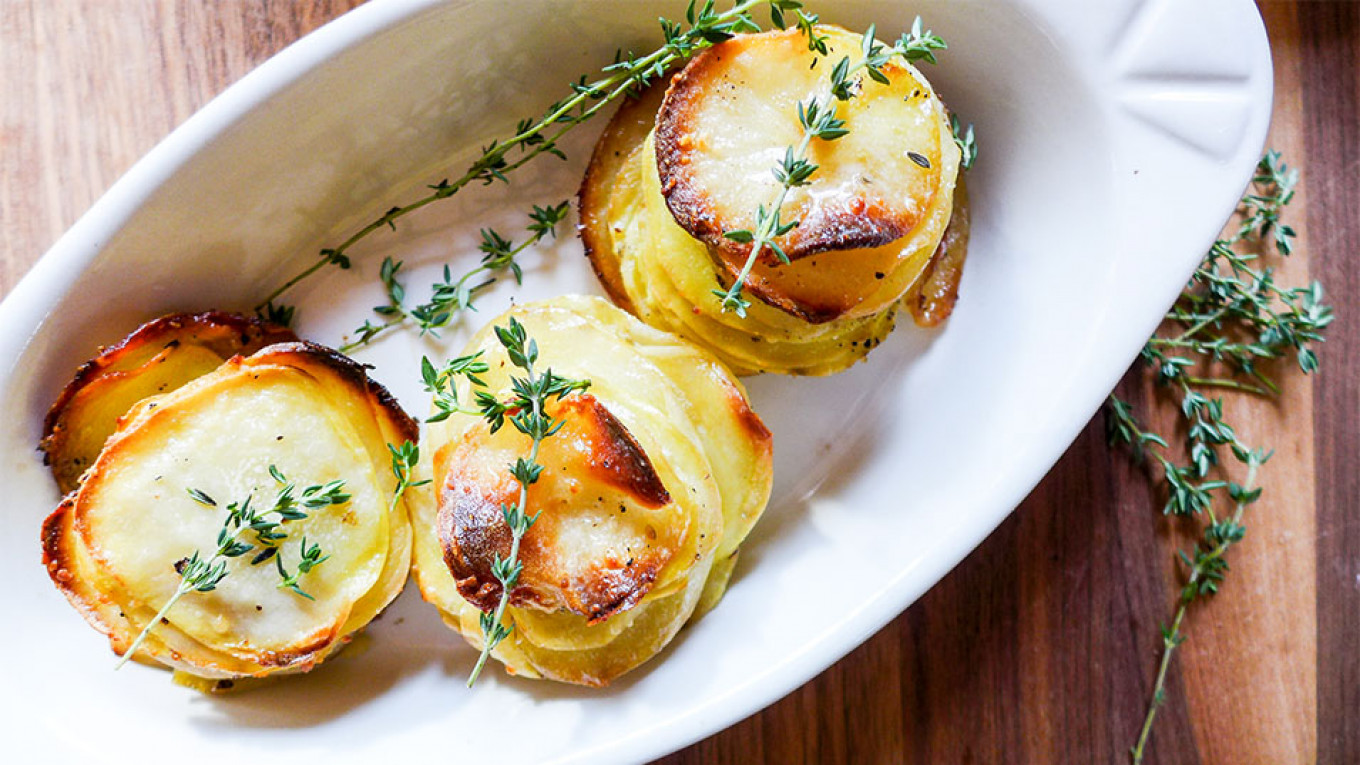
Potato Stacks
Short ribs are usually served over a mashed starch of some sort, but because the meat is so tender, this can lead to too much softness in the dish. Instead, I serve the braised ribs alongside individual “stacks” of potatoes cooked in the cavities of muffin tins. This method reduces the cooking time and makes for an attractive presentation. I always cook more than I need so that the Defender and his friends can nosh on them over the weekend.
Ingredients:
- 3-lbs (1-½ kilo) (roughly 8-10medium-sized new potatoes, peeled and sliced very thin. If you own a mandoline, this is a great time to put it to use.
- One stick (118 grams) softened butter
- 2 Tbsp(30 ml) melted butter
- 1 Tbsp (15 ml) olive oil
- Three cloves of garlic, grated on a microplane zester.
- Salt and pepper
- 3-oz (75 grams) grated hard cheese such as Parmesan or Grand Padano
- 3 Tbls (45 ml) fresh thyme leaves
Instructions:
- Preheat the oven to 375ºF (190ºC)
- Butter the insides of a 12-piece muffin tin generously with the softened stick of butter. If you don’t have a muffin tin, use small ramekins or a large cookie sheet lined with parchment paper — a toothpick will hold the stacks in place.
- Toss the sliced potatoes, garlic, cheese, a generous pinch of salt and pepper, and melted butter and olive oil mixture, and half of the thyme in a large bowl to combine, making sure that the potatoes are well coated.
- Create small “stacks” of potatoes in each muffin tin section.
- Bake in the preheated oven for 1 hour or until the tops of the potatoes are golden.
- Serve garnished with more of the thyme.
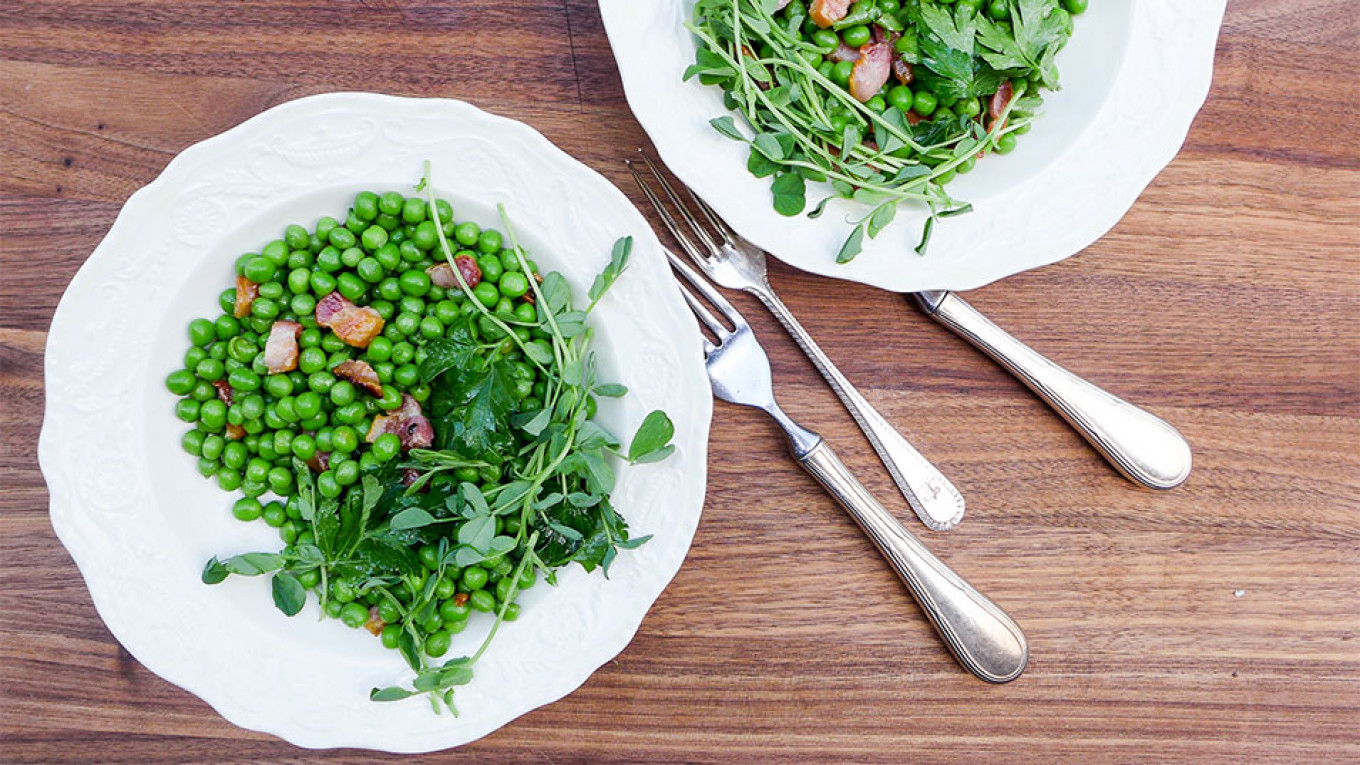
Peas & Pancetta
This is an easy dish to throw together at the last minute and adds a nice burst of color on a plate dominated by brown and beige. If you can get fresh peas, then by all means do, but good quality frozen peas will work just as well. If pancetta proves elusive, any bacon or smoked ham can easily be substituted. Don’t skimp on the fresh mint and dill, however, because they are essential!
Ingredients:
- 3 cups (750 ml) fresh or frozenpeas
- One ½-pound (200 grams) pancetta, cut into a small dice
- 2 Tbsp (30 ml) best quality olive oil
- Juice and zest of half a lemon
- ¼-cup (60 ml) fresh mint, finely chopped
- ¼ cup (60 ml) fresh dill, finely chopped
- Salt and pepper to taste
Instructions:
- Fry the pancetta until crisp. Drain on paper towel and set aside.
- Bring salted water to a rolling boil in a large pot. While the water is coming to a boil, prepare an ice bath in a large mixing bowl filled with ice water.
- Plunge the peas into the salted water and cook for 1-2 minutes until they are bright emerald.
- Plunge the cooked peas into the ice bath: this stops the cooking and will ensure they retain their lovely bright color.
- Toss the cooked peas with the pancetta, olive oil, and lemon juice. Just before serving, toss with the fresh herbs.
Apple Charlotka
This cake is no showstopper, but for most men, it is the taste of childhood, and as such, is a perfect coda to the meal we’re serving up to our Defenders.
I like Charlotkas because they are simple and easy and use up all of stale bread I invariably have lying around, but they are also delightfully open to improvisation as the recipe here: it has a bit more to it than a normal Charlotka, but this is because I cannot control myself in the dried and candied fruit section of Danilovsky Market. By all means experiment to find your own best combination!
I make this in a tall spring-form pan, because it makes it easier to release the cake. A plain soufflé dish serves just as well, as would a Russian kulich pan.
Ingredients:
- 1 lb. (500 grams) crisp, tart apples, peeled and chopped into small chunks, tossed with 1 Tbsp lemon juice
- 4 sticks (500 grams) unsalted butter
- ¼-cup (60 ml) Turbinado sugar
- ½-cup (125 ml) granulated sugar
- ¼-cup (60 ml) dark rum or Calvados
- 3 egg yolks
- ½-cup (125 ml) whole milk
- 8-12 slices of day-old white bread, crusts removed, cut into strips the approximate size of the height of your spring form pan. Challah or Brioche works well here.
- 1 tsp cinnamon
- 2 tsp orange zest
- ⅓-cup (75 ml) crystalized ginger, chopped very fine
- ½-tsp corn starch
- ½-tsp salt
Instructions:
- Preheat the oven to 325ºF (165ºC)
- Generously butter the sides and bottom of a spring form pan or soufflé dish with approximately one-quarter of the butter. Sprinkle the sides of the buttered dish with the Turbinado sugar. Set aside.
- Melt 1 Tbsp of the butter and add the rum or Calvados and cook the apples until just tender. Add the orange zest and crystalized ginger and cornstarch and toss to combine. Set aside.
- Whisk the egg yolks and milk together until they foam. Place in a shallow pie dish and dip slightly more than half of the bread strips into the egg yolk mixture, shaking off any excess. Place the coated strips on the bottom of the cake pan, then the remaining strips around its perimeter.
- Roughly chop any remaining bread strips into smaller pieces, and then fry them with 2 Tbsp of butter. When cool, toss the cooked bread chunks with the apple mixture. Spoon the apple mixture into the prepared cake pan, lined with the bread strips. Press the mixture down gently with your fingertips. Melt the remaining butter, and carefully pour it over the surface of the cake.
- Cook in the preheated oven for one hour. Whipped cream spiked with more rum or vanilla ice cream is the perfect accompaniment.
Jennifer Eremeeva is a longtime expat who writes about food, cuisine, history and culture at jennifereremeeva.com. You can follow her onTwitter at @JWEremeeva or Instagram @jennifereremeeva
A Message from The Moscow Times:
Dear readers,
We are facing unprecedented challenges. Russia's Prosecutor General's Office has designated The Moscow Times as an "undesirable" organization, criminalizing our work and putting our staff at risk of prosecution. This follows our earlier unjust labeling as a "foreign agent."
These actions are direct attempts to silence independent journalism in Russia. The authorities claim our work "discredits the decisions of the Russian leadership." We see things differently: we strive to provide accurate, unbiased reporting on Russia.
We, the journalists of The Moscow Times, refuse to be silenced. But to continue our work, we need your help.
Your support, no matter how small, makes a world of difference. If you can, please support us monthly starting from just $2. It's quick to set up, and every contribution makes a significant impact.
By supporting The Moscow Times, you're defending open, independent journalism in the face of repression. Thank you for standing with us.
Remind me later.



